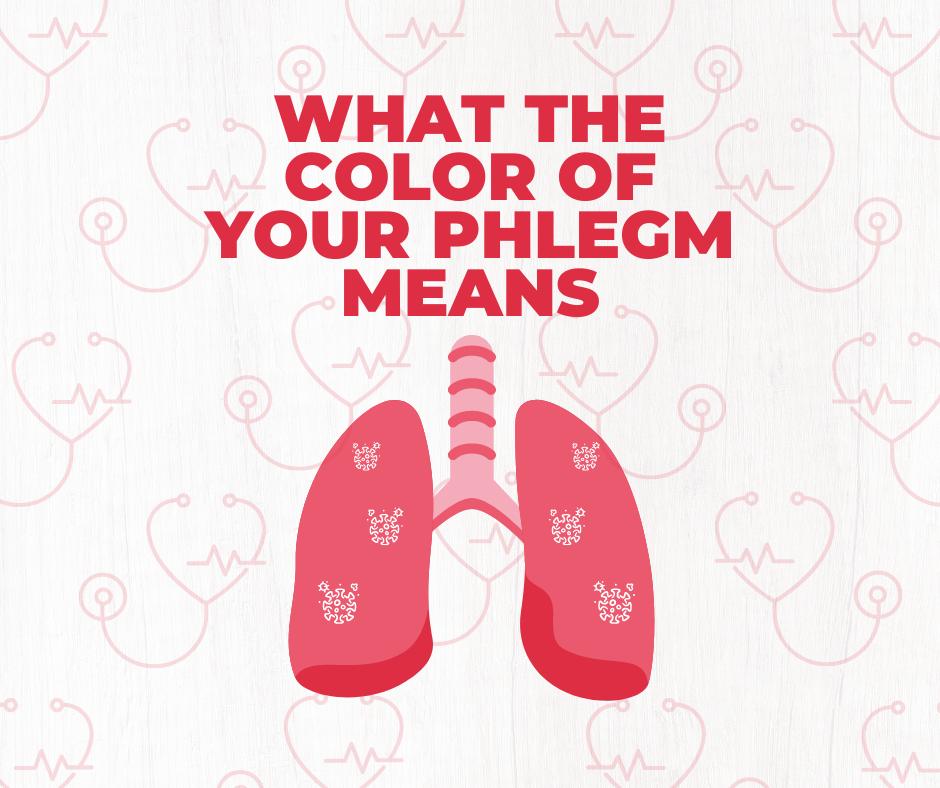

Phlegm, also known as mucus, is a thick and sticky fluid that is produced by the body to help protect and moisturize the respiratory system. The color of phlegm can change depending on a variety of factors, including the person’s health and the type of infection or illness they have.
Let’s take a look at the different colors of phlegm the human body can produce.
1. Clear Phlegm
Clear phlegm is considered to be normal and healthy. It is made with a combination of water, salt, and dead cells in the respiratory system. It is typically produced in small amounts and is not accompanied by any other symptoms. Clear phlegm is always present inside the lungs and will rarely be seen outside the lungs because the lungs are perfectly healthy.
Clear phlegm can also indicate that the body is effectively fighting off an infection or illness. It’s a sign your body is winning against whatever bacteria or virus is trying to take over. So, if you do end up sneezing or coughing some clear phlegm, you probably don’t have much to worry about.
2. White or Pale Phlegm
White or pale-colored phlegm can be a sign of a cold or upper respiratory infection. This color can also be caused by allergies, sinusitis, or other nasal issues. White phlegm can also be caused by the use of some types of medication, such as nasal sprays.
If you have asthma or COPD and are coughing white phlegm, it means you’re not managing it properly and need to be more on top of your medications. If you have an upper respiratory infection, it’s not much cause for alarm. Nothing that bedrest and yummy food cannot cure. Lastly, if you have allergies, white phlegm is a sign you need antihistamines!
3. Yellow or Green Phlegm
Yellow or green phlegm can be a sign of a bacterial infection, such as pneumonia or bronchitis. This color can also indicate that the body is producing more phlegm to fight off an infection. Yellow or green phlegm can also be caused by the presence of pus, which is a mixture of white blood cells, dead cells, and bacteria.
At this point of infection, you’ll want to talk with your primary care provider. They can ask you questions about the infection, including how long it’s been happening and if you’re experiencing any other symptoms such as fever and chills. Then, they can determine if this yellow/green phlegm was indicative of something more serious and will prescribe you something.
4. Black or Gray Phlegm
Brown or gray phlegm can be a sign of a lung infection or smoking. This color can also indicate that the person has inhaled something that has irritated their lungs such as smoke or dust.
If you’re an avid smoker, we highly encourage you to stop smoking. Smoking can cause irreversible damage to your lungs or mask the natural color of your phlegm. This prevents you from looking at warning signs in your lungs. If you work in an environment with a lot of soot or smoke, such as coal mining, we highly encourage you to wear a mask to prevent unwanted things from clogging up your airways.
5. Brown Phlegm
Brown phlegm is fairly normal among people who have really bad chronic lung conditions. Over time, blood and bacteria accumulate in the phlegm, permanently staining it brown. It’s important to monitor your symptoms and have a chat with your doctor about your brown phlegm. They can prescribe you antibiotics if the bacterial infection gets too bad.
6. Red or Pink Phlegm
Red or pink phlegm can be a sign of a lung infection or lung cancer. This color can also indicate the presence of blood, which can be caused by a variety of factors, such as a lung infection, bronchitis, or pneumonia.
When you have blood in your phlegm, it’s important to see a doctor as soon as possible. They can look at your lungs to see if it’s anything urgent. They will likely have you do tests such as a chest x-ray too to take a closer look because blood is anything but normal in phlegm.
Other Things to Remember
It is important to note that the color of phlegm alone is not always a reliable indicator of a person’s health. Other symptoms, such as fever, coughing, and shortness of breath, should also be taken into account when determining the cause of the phlegm’s color. If you are concerned about the color of your phlegm, it is best to consult a medical professional.
It’s also essential to note that, even though the color of phlegm can give some clues about a person’s health, it’s not always a definitive diagnosis, therefore, a medical evaluation is always recommended.

